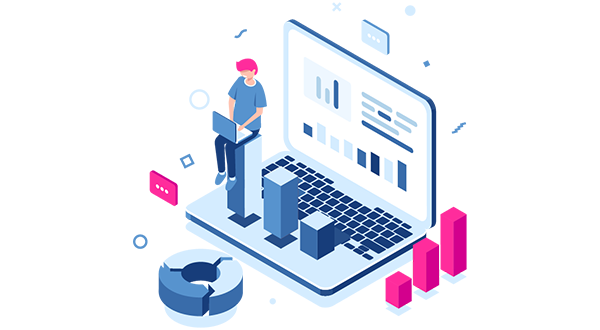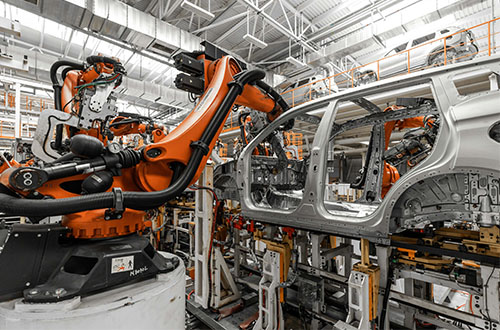

The Forgotten Dependencies

The mLogica Migration Team
Mapping Middleware & Interfaces in Mainframe Modernization
Companies are quickly updating their old mainframe systems to take advantage of the cloud’s flexibility, scalability, and cost savings. Yet amid the high-level conversations around refactoring COBOL and Assembler code or migrating legacy databases, one critical layer is often overlooked; middleware and interface dependencies.
These hidden dependencies, quietly operating in the background for decades, often present some of the biggest risks during mainframe modernization projects. Failing to identify, map, and plan for them can derail even the most well-funded and technically sound modernization initiatives. At mLogica, we've seen firsthand how uncovering and addressing these forgotten components early in the modernization journey is the key to long-term project success.
The Invisible Backbone: Why Middleware Matters
Legacy mainframes aren’t just standalone systems running monolithic applications. They are complex ecosystems supported by a web of middleware, third-party interfaces, and proprietary protocols that connect disparate services. This infrastructure includes, but is not limited to, IBM MQ, CICS, IDMS, IMS-DC, FTP bridges, batch schedulers, and inter-application messaging frameworks.
These components often perform mission-critical tasks such as:
- Orchestrating high-volume transactions between subsystems
- Managing batch jobs and scheduling
- Enabling secure file transfers and message queues
- Maintaining system-to-system communication across heterogeneous platforms
However, many of these components are poorly documented, hardcoded, and managed by SMEs (subject matter experts) who may be approaching retirement. This leads to a dangerous knowledge gap when organizations embark on modernization.
The Business Risks of Ignoring Middleware Dependencies
Modernization is a strategic business initiative where missing hidden dependencies can pose serious risks:
- Unplanned Downtime: If a legacy message queue or scheduler isn’t properly mapped and migrated, critical workloads can fail post-migration, leading to service disruptions and potential reputational damage.
- Security Vulnerabilities: Unsecured legacy protocols or unmonitored interfaces can become backdoors for cyber threats during or after the migration process, especially in regulated industries such as healthcare, finance, and government.
- Regulatory Non-Compliance: Untracked data flows involving sensitive information may violate GDPR, HIPAA, or FedRAMP policies once moved to a cloud environment.
- Cost Overruns and Project Delays: Rework due to missed interface mappings adds significant costs and can push go-live timelines back by months.
mLogica’s Approach: Making the Invisible, Visible
At mLogica, our modernization philosophy revolves around risk-aware, intelligence-driven transformation. This includes an early, structured discovery phase focused on interface and middleware dependency mapping, which is an often-missing piece in traditional modernization methodologies.
We leverage our proprietary LIBER*DAHLIA platform, engineered specifically for legacy system analysis, to identify and analyze:
- Batch job configurations and scheduler triggers
- Message queue routing and transformations (e.g. IBM MQ)
- CICS transaction flows and program mappings
- Interface endpoints, file transfers, and protocol usage
- External API dependencies and inter-system calls
Through deep-code scanning, metadata extraction, and cross-program dependency analysis, we create a comprehensive dependency graph that details every interface and middleware linkage across the mainframe ecosystem.
Real-World Impact: Middleware Mapping in Action
A perfect example of how overlooked middleware and interface components can threaten mission-critical operations, and how mLogica mitigates that risk, can be seen in one of our successful government-sector engagements.
A major U.S. federal agency was operating on aging Mainframe systems running legacy applications. These systems were tightly integrated with third-party solutions and backend databases through a web of undocumented middleware and file-based interfaces. Despite being stable, the environment posed increasing operational risks due to unsupported hardware, outdated middleware, and lack of visibility into how components communicated.
mLogica was engaged to modernize the environment and eliminate infrastructure and vendor lock-in. During the initial assessment, our team leveraged LIBER*DAHLIA and other LIBER*M tools to perform:
- Automated discovery of third-party middleware and batch job triggers
- Mapping of system-to-system communications and API integrations
- Analysis of code and data dependencies tied to application logic
We discovered several undocumented scripts and middleware services that transferred encrypted files between internal agencies and partner systems. Failing to detect and replicate these files would have jeopardized the functionality of critical workflows.
By recreating these middleware pathways within a cloud-native architecture on AWS, and using containerization and microservices to refactor application logic, we ensured seamless continuity of service. The migration resulted in a modern, secure, and scalable infrastructure while maintaining regulatory compliance.
Best Practices for Middleware Discovery and Planning
To future-proof modernization projects and eliminate the “black box” risk, mLogica recommends the following best practices:
- Start with a Baseline Assessment: Before transforming a single line of code, map every system-to-system integration point using automated tools like LIBER*DAHLIA.
- Involve Cross-Functional SMEs Early: Middleware often spans infrastructure, application, data and network teams. SMEs from each of these teams can help identify existing systems, dependencies, and integration points. This prevents oversight of critical components, such as legacy systems or niche APIs, during assessment.
- Document and Rationalize: Identify which middleware services are still in use, which can be retired, and which need replatforming. Not all components need a 1:1 replacement.
- Embed Security and Compliance: Use this opportunity to modernize data transmission protocols, add encryption, and apply zero-trust access policies to all endpoints.
- Plan for Parallel Operation: Gradual (or phased) migration and dual-run environments reduce the risk of system failure due to overlooked interface issues.
Middleware Modernization Is No Longer Optional
In the digital era, enterprises and public agencies alike cannot afford to let legacy middleware be an afterthought. These hidden components are the glue that holds your systems together, and if left unmapped, they’re also the cracks through which your modernization initiative can fall.
At mLogica, we believe that successful modernization isn’t just about transforming code, it’s about transforming risk into readiness. By bringing middleware and interface mapping to the forefront of modernization planning, we empower our clients to migrate smarter, safer, and faster.








































